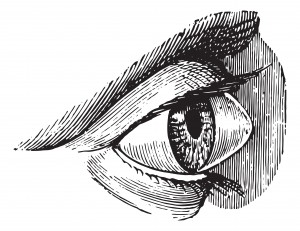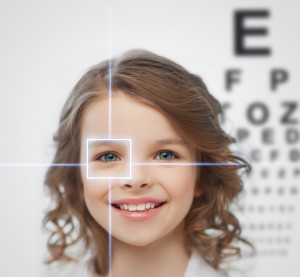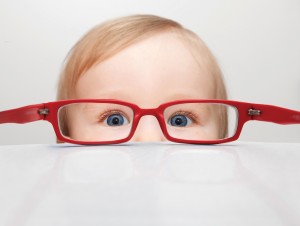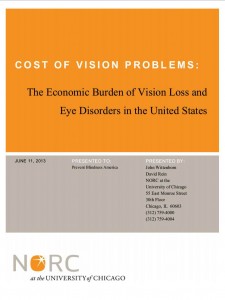Signs of eye disease that you should be aware of for early treatment.
 Susan DeRemer, CFRE
Susan DeRemer, CFRE
Vice President of Development
Discovery Eye Foundation
Signs of eye disease that you should be aware of for early treatment.
 Susan DeRemer, CFRE
Susan DeRemer, CFRE
Vice President of Development
Discovery Eye Foundation
The National Keratoconus Foundation, a program of the Discovery Eye Foundation, has been serving the keratoconus (KC) community for over 27 years. They have been a leading source of information on KC, while also providing support and educational programs, such as the OC Keratoconus Seminar this Saturday, March 14th. One of the reasons for the timely, quality information they are able to share, are their relationships with leading eye care professionals around the world.

We are happy to report that a new professional organization for eye care professionals treating KC and other forms of corneal ectasia has been formed, the International Keratoconus Academy of Eye Care Professionals. It is our hope that we can join together in in providing accurate information on KC as well as find future treatments and cures, defining the future of keratoconus. Here is more information about the new organization.
The International Keratoconus Academy of Eye Care Professionals (IKA) was recently established to promote ongoing professional education and scientific development in the area of keratoconus and other forms of corneal ectasia. Its mission is to promote and develop the knowledge base and awareness of the state of the art pertaining to the diagnosis and management of keratoconus and other forms of corneal ectasia. And further to promote the awareness and understanding of the most appropriate and effective treatment strategies for the management of these diseases. According to S. Barry Eiden, OD, FAAO, co-founder and president,” I.K.A. is dedicated to providing comprehensive education to the eye care professions and to foster ongoing clinical research in order to improve the lives of patients suffering from these diseases. “
I.K.A. will accomplish its mission by providing an array of educational initiatives which will include live events, web-based education, social media activities and publications in the professional literature. It will also be dedicated to supporting ongoing clinical research. I.K.A. will function as a complementary entity to other organizations that support patients with these diseases such as the National Keratoconus Foundation (NKCF). These organizations will work cooperatively to establish a comprehensive effort to advance knowledge, awareness and quality of care.
The founding executive board of the International Keratoconus Academy of Eye Care Professionals is comprised of a group of highly regarded experts in the field including:
An international physician’s advisory board comprised of expert optometrists and ophthalmologists is being formed. For more information or questions about IKA, please contact them at info@keratoconusacademy.com.
3/10/15
 Susan DeRemer
Susan DeRemer
Vice President of Development
Discovery Eye Foundation
12/23/14
On behalf of Discovery Eye Foundation, we would like to wish you the best this holiday season!

Because this is such a busy time of the year, we will not be posting to the blog, giving you more time to enjoy your family and friends.
We will resume posting on Tuesday, January 6th.
 Susan DeRemer, CFRE
Susan DeRemer, CFRE
Vice President of Development
Discovery Eye Foundation
9/2/14
“The theater of the mind could be generated by the machinery of the brain.”
For more information on Charles Bonnet Syndrome, please go to the Macular Degeneration Partnership website.
*Testing for functional brain imagery as individuals hallucinate can find different parts of the brain are activated.
Your brain has a particular area or lobe where vision is interpreted. The light energy that bounces off objects enters the eye and is converted to chemical energy by the retinal cells. That energy is sent through the optic nerve where processing of the vision starts to occur. When it reaches the visual cortex, it is sent to very specific areas of the brain and specific areas of the brain see specific things.
The fusiform gyrus processes faces, but different areas process the parts of faces. While damage in the fusiform gyrus causes you to lose the ability to recognize faces, abnormal activity in that area will cause you to hallucinate faces. An area in the anterior part of this gyrus is where teeth and eyes are recognized. There are other areas that specifically sees cartoons and another part for buildings and landscapes.
 Judith Delgado
Judith Delgado
Executive Director
Macular Degeneration Partnership
A Program of Discovery Eye Foundation
8/21/14
In the third of this series, Buddy Russell, from the Emory University Eye Center, provides a great overview of common pediatric eye diseases.
A basic understanding of some of the conditions that may be present in pediatric patients is important to not only know what they are but also understand well enough to explain to the parent or caregiver. The following is intended to be an overview of some of those conditions and not a complete explanation.
 Buddy Russell, FCLSA, COMT
Buddy Russell, FCLSA, COMT
Associate, Specialty Contact Lens Service
Emory University Eye Center
8/19/14
Here is part two in Buddy Russell’s series; this one focusing on contact lenses as a treatment option for children.
The human visual system at birth is poorly developed, but rapidly becomes the remarkable combination of nerve tissue, muscles and optics that provide us with the sense of vision. Those babies born with “perfect” eyes have only the opportunity to develop normal vision. The information processed by the eyes is sent directly to the brain and is interpreted as vision. During the first few weeks, the child sees shapes, lines and space between objects. The child’s visible world is most usable within 8-14 inches of his/her eyes. During this time, the eyes may appear to wander. After about a month or so, the normal child’s eyes will appear more coordinated and they start to show more interest in looking at objects. It is usually in the third month that a child who has normal eyes can fix and follow on a near object. The growth of the eye is a dynamic process, influenced by genetics and the environment.
During the first few weeks, the child sees shapes, lines and space between objects. The child’s visible world is most usable within 8-14 inches of his/her eyes. During this time, the eyes may appear to wander. After about a month or so, the normal child’s eyes will appear more coordinated and they start to show more interest in looking at objects. It is usually in the third month that a child who has normal eyes can fix and follow on a near object. The growth of the eye is a dynamic process, influenced by genetics and the environment.
Early detection of any eye problem is key to treating the disorder. The prevalence of vision problems in children is higher than you might think. For example:
As a result of his granddaughter and her eye problem, former President Jimmy Carter initiated a program in 2002 called InfantSEE. This program allows children to have an eye exam at a very young age at no charge to the family. Participating eye doctors provide a more thorough exam than the busy pediatrician. As a result, there is a greater opportunity to detect and treat eye disorders that may otherwise go undetected.
Fitting pediatric patients is not usually about routine visits and patients who want to wear contact lenses. It is about critical and often urgent situations and patients who have to wear contact lenses. The more common medical indications for contact lenses can be categorized into three groups; anisometropia, irregular corneal astigmatism and “large” refractive errors.
One of the more common conditions potentially leading to a permanent loss of vision in a young patient is anisometropia. This difference in the refractive errors of the two eyes can lead to suppression of the less clear image. As a result of the non-focused eye, the brain of a young patient simply turns off the blurred eye. Early detection is key to successful treatment. Following the diagnosis of this problem being present, simply correcting the refractive error may be enough. However, it has been reported that as little as one diopter difference between the two eyes corrected with spectacles and the resultant anisokonia, can lead to foveal suppression impacting stereopsis and depth perception. The use of a contact lens or contact lenses alters the effective image size due to the vertex distance being zero compared to either the magnification or minification of the image size due to the vertex distance with spectacles. One of the most severe examples of this condition would be a child with a unilateral congenital cataract and managed with spectacles postoperatively.
Whether acquired or congenital, the presence of irregular corneal astigmatism of the anterior curve of the cornea is best managed with a contact lens. This condition is to be considered urgent if the patient is of a young age. The eye may forever loose the opportunity to be corrected as the resultant amblyopia develops over a short period of time. By neutralizing the corneal irregularities with a contact lens, the eye of a young child will hopefully gain enough vision improvement to avoid the potential permanent loss.
Obviously, patching the better eye may also be necessary if the treated eye’s vision is not as correctable as the unaffected eye. The length of time the child is to be patched is to be determined by the pediatric ophthalmologist or optometrist, as this area of treatment is sometimes controversial. The factors that are considered include the level of vision obtained, age of the child and the condition of the other eye.
The optics of spectacle correction in high powers have inherent properties that include distortion, prismatic effect and minification / magnification. For instance, the decrease in image size when one views an object through high minus spectacles may result in less vision. This decrease in image size may impact the opportunity to fully develop normal vision in a young child. The smaller image size that is due to the vertex distance of spectacles may be better managed with a contact lens that has a vertex distance of zero thus providing a larger image. This larger image size often increases best-corrected vision.
Arguably, the most important factor with young children having a good outcome is the parents / caregivers. The technical challenges that exist in these cases are secondary to the ability the fitter must possess to effectively explain and train the person or persons that will take care of the child outside of the office. They must be your partner in the child’s treatment. They must understand the urgency of the situation, they must understand the seriousness of the problem, they must be trained to properly apply, remove and care for the lens / lenses, they must also follow any and all instructions concerning the child. Many of these parents struggle with feelings of nervousness, guilt and sadness. My strategy is to be sensitive to their feelings but not let them feel sorry for themselves too long as the clock is ticking. I provide verbal instructions, written instructions, videos, my email address and a 24-hour phone number. I welcome the caregiver to ask any question at any time. I do my best to let them know that I do care and that I want them and their child to be successful. I am tough on them. There is no good excuse not to do as I have instructed them to do.
When the child and the parent / caregiver are convinced that I am confident in my ability and they know that I do care, the partnership develops as we walk the path together. I want the child to know that they are coming to see me. I want them to know I will reward their cooperation with all phases of the visit. This positive reinforcement may be in the form of a piece of candy, a small toy or just a sticker when the child allows me to see their eye, measure their cornea or intraocular pressure or they just tell me what they can see. Kids love to please us just like they love to please their parents. Reward them for it. Whether you consider this approach bribery or positive reinforcement, it works.
 Buddy Russell, FCLSA, COMT
Buddy Russell, FCLSA, COMT
Associate, Specialty Contact Lens Service
Emory University Eye Center
During the height of summer sunshine (and heat!), it’s helpful to discuss the importance of eye protection, including ways to reduce the harmful effects of sun glare.
Fundamentally, we need light to see. Approximately 80% of all information we take in is received through the sense of sight. However, too much light – and the wrong kind of light – can create glare, which can affect our ability to take in information, analyze it, and make sense of our surroundings.
Facts about Sunlight
Every type of light has advantages and disadvantages, and sunlight is no exception:
Advantages:
• Sunlight is the best, most natural light for most daily living needs.
• Sunlight is continuous and full-spectrum: the sun’s energy at all wavelengths is equal and it contains all wavelengths of light (explained below).
Disadvantages:
• It is difficult to control the brightness and intensity of sunlight.
• Sunlight can create glare, which can be problematic for many people who have low vision.
• Sunlight is not always consistent or reliable, such as on cloudy or overcast days.
Visible Light and Light Rays
An important factor to consider is the measurement of visible light and light rays, beginning with the definition of a nanometer:
• A nanometer (nm) is the measurement of a wavelength of light.
• A wavelength is the distance between two successive wave crests or troughs:
• A nanometer = 1/1,000,000,000 of a meter, or one-billionth of a meter. It’s very small!
The human visual system is not uniformly sensitive to all light rays. Visible light rays range from 400 nm (shorter, higher-energy wavelengths) ? 700 nm (longer, lower-energy wavelengths).

The visible light spectrum occupies just one portion of the electromagnetic spectrum, however:
• Below blue-violet (400 nm and below), is ultraviolet (UV) light.
• Above red (700 nm and above), is infrared (IR) light.
• Neither UV nor IR light is visible to the human eye.
Ultraviolet Light and Blue Light
Ultraviolet (UV) light has several components:
• Ultraviolet A, or UVA (320 nm to 400 nm): UVA rays age us.
• Ultraviolet B, or UVB (290 nm to 320 nm): UVB rays burn us.
• Ultraviolet C, or UVC (100 nm to 290 nm): UVC rays are filtered by the atmosphere before they reach us.
Blue light rays (400 nm to 470 nm) are adjacent to the invisible band of UV light rays:
• There is increasing evidence that blue light is harmful to the eye and can amplify damage to retinal cells.
• You can read more about the effects of blue light at Artificial Lighting and the Blue Light Hazard at Prevent Blindness.
A new study from the National Eye Institute confirms that sunlight can increase the risk of cataracts and establishes a link between ultraviolet (UV) rays and oxidative stress, the harmful chemical reactions that occur when cells consume oxygen and other fuels to produce energy.
Sunlight and Glare
Glare is light that does not help to create a clear image on the retina; instead, it has an adverse effect on visual comfort and clarity. Glare is sunlight that hinders instead of helps. There are two primary types of glare.
Disability glare
• Disability (or veiling) glare is sunlight that interferes with the clarity of a visual image and reduces contrast.
• Sources of disability glare include reflective surfaces (chrome fixtures, computer monitors, highly polished floors) and windows that are not covered with curtains or shades.
Discomfort glare
• Discomfort glare is sunlight that causes headaches and eye pain. It does not interfere with the clarity of a visual image.
• Sources of disability glare include the morning and evening positions of the sun; snow and ice; and large bodies of water, (including swimming pools).
Controlling Glare
You can protect your eyes from harmful sunlight and minimize the effects of glare by using a brimmed hat or visor in combination with absorptive lenses.
• Absorptive lenses are sunglasses that filter out ultraviolet and infrared light, reduce glare, and increase contrast. They are recommended for people who have low vision and are also helpful for people with regular vision.
• Lens colors include yellow, pink, plum, amber, green, gray, and brown. Ultra-dark lenses are not the only choice for sun protection.
• Lens tints in yellow or amber are recommended for controlling blue light.
• NoIR Medical Technologies: NoIR (No Infra-Red) filters absorb UVA/UVB radiation and also offer IR light protection.
• Solar Shields: Solar Shields absorb UVA/UVB radiation and are available in prescription lenses.
• You can find absorptive lenses at a specialty products store, an “aids and appliances store” at an agency for the visually impaired, or a low vision practice in your area. Before you purchase, it’s always best to try on several different tints and styles to determine what works best for you.
More Recommendations
• Always wear sunglasses outside, and make sure they conform to current UVA/UVB standards.
• Be aware that UV and blue light are still present even when it is cloudy or overcast.
• Make sure that children and older family members are always protected with UVA/UVB-blocking sunglasses and brimmed hats or visors.
 Maureen A. Duffy, CVRT
Maureen A. Duffy, CVRT
Social Media Specialist, visionaware.org
Associate Editor, Journal of Visual Impairment & Blindness
Adjunct Faculty, Salus University/College of Education and Rehabilitation
6/12/14
Floaters can be anything seen in your vision that moves “to and fro” with your eye movement. The movement is not stationary compared to a blind spot which is fixed or stationary in your field of vision.

Remember, if you experience new floaters; please see an eye doctor for an examination.
Here are some common causes of floaters:
Posterior Vitreous Detachment
A posterior vitreous detachment (PVD) is a common cause of floaters. A PVD occurs when the vitreous separates from the retinal surface. This is a normal event and will eventually occur in everyone. Retinal tears are more likely to occur right after a PVD has started.
The vitreous is usually a clear watery gel. As we age, enough of the proteins in the vitreous liquefy and degenerate. Eventually, there is a physical separation of the vitreous from the retina due to this liquefaction.
“Floaters” can develop due to opacities/haziness due to the aging gel which is no longer absolutely clear due to changes in the optical properties of the gel or the interface between the vitreous and water inside the eye.
Tears in the Retina
Retinal tears can cause floaters by either causing a small vitreous hemorrhage, or by dislodging cells into the vitreous which are normally located underneath the retina.
Vitreous Hemorrhage
Blood in the vitreous can also cause floaters. A so-called vitreous hemorrhage may result from either a retinal tear or advanced diabetic retinopathy. Occasionally, retinal vascular occlusions can also lead to bleeding in the vitreous.
Blood in the eye often absorbs, but only your doctor can determine the exact nature of the floaters and if they are associated with a retinal tear. It’s impossible for you to tell the cause of floaters without a proper dilated eye exam.
Inflammation
Certain types of inflammation or infection can cause significant floaters. Actually, these are white cells which migrate to the retina and vitreous and can be seen a floaters.
Asteroid Hyalosis
This is a common entity where lots of fine white opacities are suspended in the vitreous. In most cases, these are not noticed by the patient. Sometimes, however, the so-called asteroid bodies are so dense they prevent good examination of the retina. Other times, especially after a PVD, the asteroid bodies are noticed and patients may complain of floaters.
New Floaters: Evaluation
All new floaters must be examined by your eye doctor within 24-72 hours after occurring. Even if the floaters disappear in that time frame, you should be examined to look for a possible tear in the retina.
Again, you, the patient, can NOT tell the cause of the floaters or if you’ve sustained a retinal tears. Retinal tears can cause a retinal detachment – a potentially blinding problem.
Treatment of Floaters
There are no medicines or eye drops to treat floaters. Most doctors advise simply putting up with the floaters.
For patients who have chronic problems with floaters, I recommend a vitrectomy. A vitrectomy is an eye operation, performed by a retinal specialist. The operation is comparable to a cataract operation in terms of safety and possible complications.
There are a handful of doctors who perform Yag laser to break up floaters.
 Randall V. Wong, MD
Randall V. Wong, MD
Retina Specialist
Fairfax, Virginia
5/6/14
**Update 6/16/14 – New estimate on the cost of vision problems just came out in the new Prevent Blindness America report showing they could reach $717 billion by 2050.
This past week I attended a dinner where a topic of discussion was the cost of chronic disease on healthcare – 75% of healthcare dollars go to the treatment of chronic diseases. This led me to explore the costs chronic eye diseases such as age-related macular degeneration, cataract, glaucoma and diabetic retinopathy.

In 2007 Prevent Blindness America (PBA) published a report, The Economic Impact of Vision Problems that was updated in 2012, which explored the economic burden related to people 40 and older and the conditions of, age-related macular degeneration (AMD), cataract, diabetic retinopathy, primary open-angle glaucoma and refractive error, as well as the economic impact of vision problems and blindness.
They looked at direct medical costs including inpatient, outpatient and prescription costs; direct non-medical costs, which include nursing home care, guide dogs, and government programs for the blind and visually impaired; and loss of productivity, which includes lower labor force participation and lower wages for those with vision problems as opposed to the same age group with normal vision.
| Direct Medical Costs | $16.2 billion |
| Direct Non-medical Costs | $11.2 billion |
| Productivity Losses | $8.0 billion |
| TOTAL ECONOMIC IMPACT | $35.4 billion |
Looking more closely at the direct medical cost with regards to age-related eye diseases, the costs per patient broke down as follows:
| AMD | Cataract | Diabetic Retinopathy | Glaucoma | |
| Medical Costs | $797 | $12,625 | $6,012 | $3,552 |
A year later, the NORC at the University of Chicago presented their findings, but also included the age groups of children 0-17 and adults 18-39 in a publication titled, Cost of Vision Problems: The Economic Burden of Vision Loss and Eye Disorders in the United States. It was interesting to see how the estimates varied in the two approaches when I only focused on the group of age 40 and older, as they did in the PBA study.

The reclassification of the costs into two line items, from the previous three of the PBA report, presented a challenge and is one reason for discrepancies. They went into more depth and were broken down as follows: direct costs included medical care, medical vision aids, low vision aids, special education, school screenings and Federal assistance programs; and indirect costs included loss of productivity for adults and caregivers, long-term care and transfer payments.
| Direct Costs | $52.58 billion |
| Indirect Costs | $58.49 billion |
| TOTAL ECONOMIC IMPACT | $111.07 billion |
And when I looked more closely at the medical cost with regards to age-related eye diseases, the costs per patient broke down as follows:
| AMD | Cataract | Diabetic Retinopathy | Glaucoma | |
| Medical Costs | $4,457 | $10,570 | $4,005 | $5,617 |
Regardless of the data sources and reporting classifications, one thing is clear – the direct medical costs of eye disease is high and growing each year.
Both reports contained a wide variety of information that is very interesting. Links for both studies have been included so you can review the numbers and draw your own conclusions.
 Susan DeRemer, CFRE
Susan DeRemer, CFRE
Vice President of Development
Discovery Eye Foundation
 Welcome to your blog, where you will find the most important information about eye health and sight-threatening eye diseases.
Welcome to your blog, where you will find the most important information about eye health and sight-threatening eye diseases.
The Discovery Eye Foundation team has more than four decades of knowledge, experience and relationships to help you better understand your eye disease and discuss it with your eye doctor — so you can make more informed decisions and lifestyle choices.
You will find information from leading ophthalmologists, optometrists, eye researchers, low-vision specialists, nutritionists and other professionals who are interested in helping you keep your eyes as healthy as possible, and/or deal with eye disease and vision loss.
We will be posting twice a week, with a guest post from an eye-care professional every Thursday addressing an issue important to our constituents.
We want to hear from you. What information do you find useful? What topics are important to you? And while we will respond to general questions about eye diseases, we will not be able to address patient-specific questions that can best be answered by your own eye doctor.
For more in-depth information, please visit one of our three websites to learn about specific eye diseases, view videos, listen to recorded presentations and interviews, and discover disease-specific research and resources.
• DiscoveryEye.org offers information on age-related macular degeneration (AMD), cataracts, diabetic retinopathy, glaucoma, keratoconus (KC), ocular herpes and retinitis pigmentosa, along with other eye conditions. For help with positive lifestyle choices, check out Eye Cook for delicious eye-healthy recipes.
• AMD.org was one of the first online sources for information focused solely on age-related macular degeneration (AMD). This site is continually updated with the latest news on potential treatments. It fully explains the role of vitamins in eye health and offers insight into AREDS II. It has helpful information for caregivers and a national directory of resources.
• NKCF.org is your one-stop site for in-depth information on keratoconus (KC). In addition to providing you with the latest on KC treatments and clinical trials, it has two free online support groups for people diagnosed with KC and their families.
 Susan DeRemer, CFRE
Susan DeRemer, CFRE
Vice President of Development
Discovery Eye Foundation
|
How wildfire affects your eyes and how to protect them |